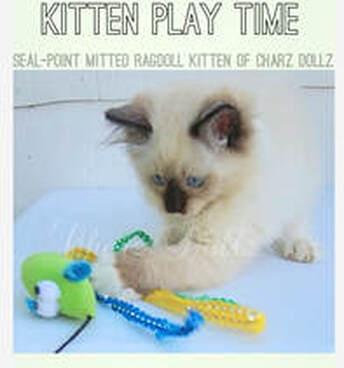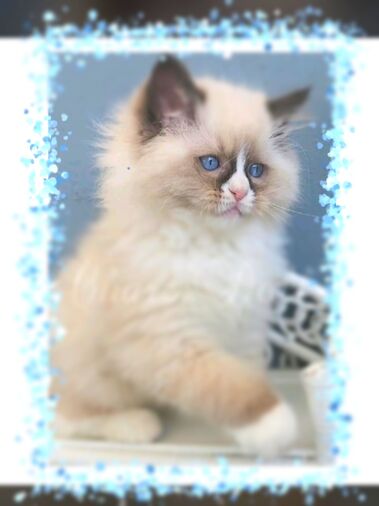 Ever wondered what it takes to make a long-haired cat look show-ready? Imagine the luxurious, glossy mane or the fluffy, voluminous coat of a Ragdoll. These beauties don't just wake up like this. It's all about proper grooming. Just like in human hair care, the first step to a stunning feline coat is a thorough brushing. Brushing not only keeps the coat neat and tangle-free, but it also helps distribute natural oils, promoting a healthy, glossy sheen. Remember, long-haired cats require daily brushing. A slicker brush is ideal for this task. It has thin, short wires close together that can easily pick up loose fur and smooth out tangles. Next on the agenda is bathing. Yes, contrary to popular belief, some cats do need baths. And for our long-haired friends, this is especially important before a show. Use a cat-friendly shampoo and conditioner, focusing on getting the coat clean and fluffy, but avoid getting water in the cat's ears or eyes. After the bath, it's time for drying. This step is crucial. A damp coat can lead to matting and skin issues. Use a towel to gently squeeze out excess water, and then a hairdryer on a cool setting to fully dry the coat. Keep the dryer moving to avoid concentrating heat in one area. The final step is the finishing touch. Use a comb to smooth the hair and create that polished, show-ready look. Some groomers also like to use a grooming spray for added shine and manageability. There you have it - the secrets to a show-stopping long-haired cat. Remember, daily brushing, regular bathing, proper drying, and finishing touches are the key elements of grooming. It's not just about looking good, but also about keeping your cat healthy and happy. The effort is worth it when you see your cat strutting their stuff, looking their absolute best. Remember, grooming practices can vary slightly depending on the breed. For instance, a Ragdoll's silky coat might require a different brush compared to a Persian's dense fur. Always ensure to research and consult with professionals for breed-specific grooming tips. In conclusion, grooming a long-haired cat for a show isn't as daunting as it might seem. With the right tools and a little patience, you can transform your furry friend into a feline superstar. Remember, the key to success lies in maintaining a regular grooming routine and paying attention to detail. Happy grooming!
1 Comment
 Firstly, a crucial step in your kitten's healthcare routine is regular vet visits. These check-ups are vital to monitor their growth, address any potential health concerns, and administer necessary medical treatments. Skipping on these visits might lead to health complications later on, so make sure your little furball is getting the proper care it needs. Next in line are immunizations. Many might think that kittens, being indoors and relatively isolated, do not require vaccinations. However, kittens are more susceptible to certain diseases due to their developing immune systems. Starting at six to eight weeks, kittens should begin a series of vaccinations that continue until they are around sixteen weeks old. These vaccinations protect against several diseases, including rabies, feline leukemia, and several respiratory infections. Deworming is another vital aspect of kitten care. Kittens can be born with worms or can get them from their mother's milk. A regular deworming schedule, starting at two weeks of age and continuing every two weeks until they reach twelve weeks, is necessary to keep them worm-free. After twelve weeks, kittens should be dewormed every three months until they are six months old. From then on, regular deworming every six months is recommended. To summarize, taking care of a kitten is not just about feeding them and playing with them. It involves a comprehensive healthcare routine that includes regular vet visits, age-appropriate immunizations, and a thorough deworming process. Remember, kittens are not just smaller versions of cats. They have unique health needs that require attention and care. By debunking these common misconceptions and understanding the importance of medical treatments, immunizations, and deworming, you can ensure your kitten grows up to be a healthy, happy cat. In the end, it's all about providing the best care for these adorable little creatures, ensuring they lead a healthy, playful life for years to come.  Ever pondered over what toys can stimulate your kitten the most? Well, today we dive into the exciting world of kitten toys and unravel the mystery behind their benefits. In the realm of kitten toys, variety is the spice of life. From feathered wands to laser pointers, each toy offers a unique form of stimulation. Feathered wands, for instance, tap into a kitten’s innate hunting instincts. A flurry of feathers twitching at the end of a wand mimics the movements of prey, sparking curiosity and encouraging playful pouncing. Now, consider crinkly balls or toys. The distinct sound they make can instantly grab a kitten’s attention. Each bat, swat, or pounce results in a rewarding crinkle, making playtime even more enjoyable Navigate further into this universe, and you’ll discover puzzle toys. These ingenious inventions challenge a kitten’s problem-solving skills. They’re usually filled with treats, and kittens must figure out how to release the goodies. It’s a fabulous way to keep kittens occupied and mentally engaged. But what about catnip toys? Ah, the famous catnip, a plant that can send some felines into a state of euphoria. When incorporated into toys, catnip can make playtime incredibly enticing. It’s worth noting, though, that not all cats respond to catnip, and kittens under six months often show no interest. Then, there are the ever-popular laser pointers. These little devices project a small, bright light that moves swiftly, a chase. They not only provide physical exercise but also mental stimulation as kittens try to catch the elusive light dot. Finally, don’t overlook the humble cardboard box. It might seem mundane to us, but to kittens, a box is a fascinating playground. It’s a place to hide, pounce, and explore. So, what have we gleaned from our exploration of kitten toys? First, variety is key. Offering a range of toys can keep your kitten interested and stimulated. Second, toys offer more than just physical exercise. They also provide mental stimulation, challenge problem-solving skills, and can even tap into a kitten’s natural instincts. Catnip toys can add an extra layer of excitement, but remember, they’re not for everyone. Last, but certainly not least, never underestimate the power of a simple cardboard box. It’s a versatile and engaging toy that won’t break the bank. Remember, it’s not about having the most toys, but about having the right ones. After all, the goal is to keep your kitten happy, healthy, and engaged. So, go ahead, experiment with different toys and see which ones your kitten loves the most. You can start with "Catty Wand" an all-natural feathered catnip wand any kitty is guaranteed to love! Happy playing! What is a Ragdoll cat? 🤍Pictured below 10-week-old Ragdoll kitty of Charz Dollz Cattery🤍 Imagine a creature so cute, so fluffy, and so irresistibly charming that it can melt even the stoniest of hearts. Now, multiply that cuteness by tenfold, and you might just come close to envisioning a ragdoll kitten. These adorable little furballs are not just enchanting in appearance, but their playful nature and peculiar characteristics make them an absolute delight to have around. Dive into the world of ragdoll kittens, where every day is a new adventure filled with mischief, curiosity, and a whole lot of purring. Named after their tendency to go limp and floppy when picked up, just like a Ragdoll, these kittens are a breed apart. They are one of the largest domesticated cat breeds, with males often weighing between 15 to 20 pounds, and females slightly smaller.
|
AuthorFeline lover as a young child, I have since become utterly smitten by pedigree felines, in particularly the Ragdoll and Sphynx breeds. Archives |


 RSS Feed
RSS Feed
